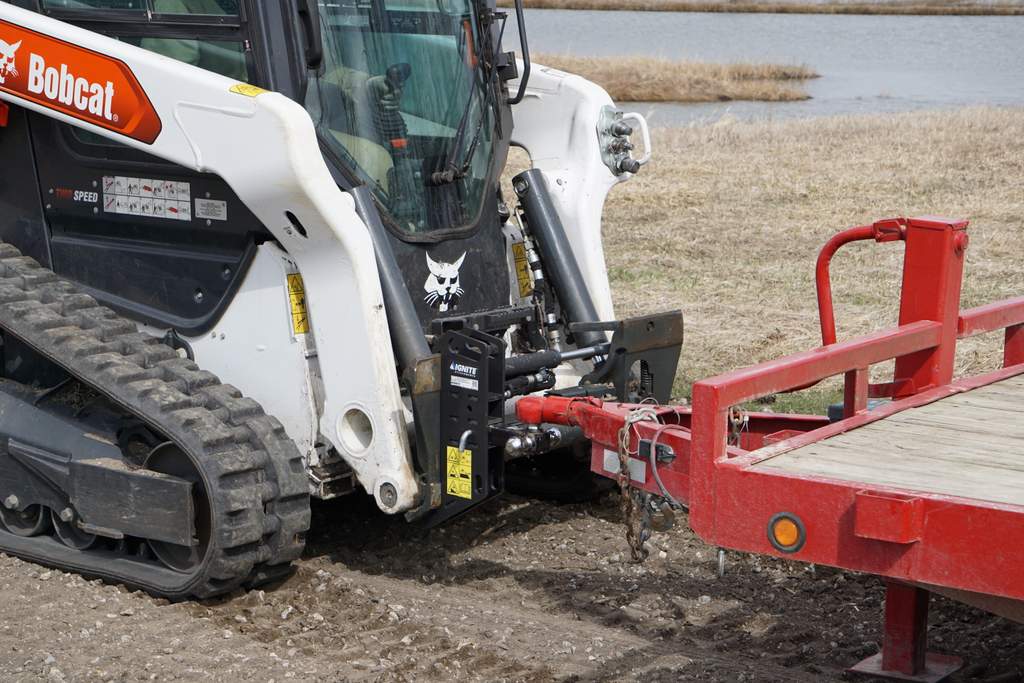Powered Attachments Are Safe When Operators are Properly Trained

Even an experienced operator can unintentionally ignore dangerous parts of attachments, like raised hydraulic lift arms or moving and/or rotating parts, after working next to them all day.
Attachments save time, money and labor — whether at a jobsite, on the farm or in the rental industry — powered by tool carriers such as skid steers, mini excavators and compact track loaders. Today’s attachments are designed for safety. Some attachments are so well designed that a single person, in a comfortable cab, can do the work of two or three straining their bodies, but operators must always be aware and cautious when using any attachment. Safety begins with good design.
Powered attachments are typically safer for the operator when they can be operated from inside the cab. However, there are some attachments that call for an operator outside the cab. Always use caution when working closely to attachments and be aware of your surroundings. Quality attachment manufacturers test their products vigorously to reduce hazards. They also include safety signs (decals), warning of hazards and they supply operator manuals with their finished products. Attachments are made for specific purposes, using any attachment for something other than its intended purpose and design limits is asking for trouble. Good design can supply a useful tool, but it’s up to the operator to choose the right tool for the right job. It’s vital for all operators to read and understand the operator’s manuals for both the attachment and the vehicle. Taking time to service and inspect all equipment before and after its daily use will prevent failures and keep the attachment in good working order.
Prior to operating any attachment, ensure the attachment is properly latched to the vehicle. If a safety shield or guard is removed for any reason, it must be replaced before operation. An operator must also be attentive. Even an experienced operator can unintentionally ignore dangerous parts of attachments, like raised hydraulic lift arms or moving and/or rotating parts, after working next to them all day. Buried and overhanging power and/or utility lines can be overlooked. Always stay aware when using attachments and be cautious of all risks not just to yourself but to any potential bystanders.
Notice and read the safety signs on all equipment — they’re there for a reason. If they are missing or damaged, contact the manufacturer for replacements. Don’t sacrifice safety for convenience. The worst thing an attachment operator can do is value saving dollars and time over saving his or her life. Make sure the attachment is properly paired for the correct application and vehicle.
If using the attachment on various vehicles, check your gallons per minute (gpm) and pounds per square inch (psi) of the hydraulic system to make sure you are within the requirements and capabilities of both. Operating the attachments outside of their hydraulic range can cause hose failures and other safety concerns. Manufacturers of attachments have a duty to design safe, reliable, quality machines. Users of attachments have a similar duty to use those machines as they were intended, to keep their machines in good running order and above all else to be mindful of themselves and bystanders in proximity of an attachment.
Glenn Danuser is the vice president of Danuser, based in Fulton, Mo.




